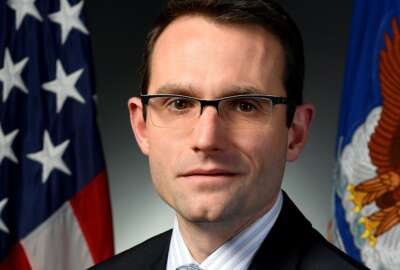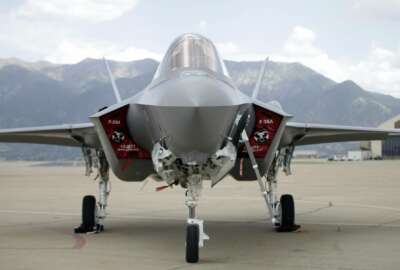
Is the key to expanding DoD’s industrial base in flying cars?
The Air Force wants to find areas where defense and industry research needs overlap.
The Air Force is getting flirty with industry and trying to lure private companies into doing research with the service by picking areas where the defense market has an advantage. Their first collaboration will be with a classic futuristic idea: flying cars.
The Air Force is encouraging its acquisition professionals to think about where the defense market has value to companies and to reach out to them for ways both the service and the businesses can benefit.
“You can imagine flying Uber cars around the country,” Roper said Monday at an Air Force Association event in National Harbor, Md. “That sounds cool, but it’s going to be a tough challenge to get them certified for safe use. It’s much easier in our world. We have our own safety process doing logistics on the battlefield. It’s probably a pretty low bar. But every flight hour that we are flying in the Air Force is worth millions, if not billions, to those private companies that want to take over this domestic urban mobility boom that’s predicted.”
Roper said the benefit is twofold, because it allows the Defense Department to expand its industrial base when partnering with companies that can gain from researching and testing with the military.
So what is the Air Force doing with flying cars?
The service is looking at it as a possibility to replace the V-22 Osprey — the iconic transport aircraft with tilt rotors.
“We are looking at a spectrum of options,” Roper said. “The idea is to prepare a series of challenges from things that would involve smaller vehicles, maybe moving a couple special aviators around to moving smaller logistics sets, ammo and meals into harm’s way. We’ll also look at heavy logistics, weapons to reload on aircraft, all the way up to a bigger system.”
Roper said the Air Force may very well go with a bigger system that does not involve a flying-car-type format, but the chance to work with industry is too good to miss.
“The opportunity to get our research lab and our acquisition professionals to not think about their requirement or mission in just the defense industrial base is too good to pass up,” Roper said. “They will think of it in the U.S. industrial base and the broader picture is it brings up a lot of interesting opportunities.”
Roper, the Air Force and DoD as a whole are concerned about the corporate consolidation of the defense industry and are branching out to other companies for new technologies in the near-peer competitor threat landscape.
“We’ve gone from having over two dozen vendors who can build a tactical aircraft to two or three,” Roper said. “We’re at the critical point where if we don’t start thinking about the industry base strategically we could collapse to two and then to one.”
The Air Force is starting its new Century Series Digital, where the Air Force plans to develop a new fighter jet as frequently as every five years.
“Consolidation happens when competitions are too far and few between,” Roper said. “We’re building the new bomber right now, when is the next bomber? History says it’s not anytime soon. If you’re a company that can build a bomber for us, what’s your incentive to stay in that?”
The hope is the new series will bring other companies into the jet fighter market.
Copyright © 2024 Federal News Network. All rights reserved. This website is not intended for users located within the European Economic Area.
Scott Maucione is a defense reporter for Federal News Network and reports on human capital, workforce and the Defense Department at-large.
Follow @smaucioneWFED





